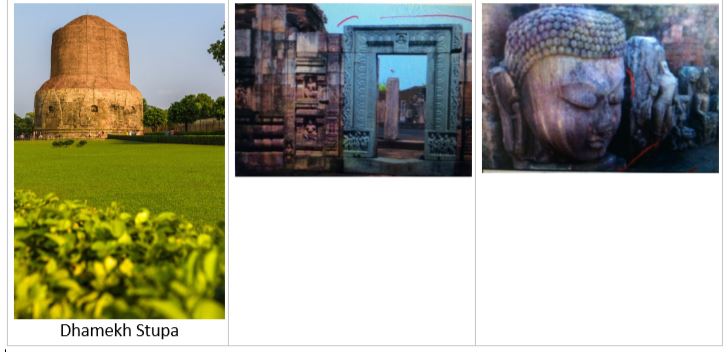Table of Contents
Gupta Architecture
This article deals with topic titled ‘Gupta Architecture .’ This is part of our series on ‘Culture’ . For more articles , you can click here
Introduction
- In Gupta age , Rock cut architecture was at its zenith & also marks the starting of free standing temples.
- Many art historians prefer to call Gupta period Art as Religious Art
- Utilitarian Art during Harappan Civilization
- Court Art during Mauryan Period
- Religious Art during Gupta Period.
- Art and architecture becomes complex. The earlier designs displaying simple pleasures of life gave way to contemplative & spiritual vision.
- Large scale temple construction took place.
- For the first time , a clear & distinctive development between Sculpture, Architecture & Painting can be seen.
- Major centers of Gupta art were
- Sarnath
- Mathura
- Nalanda
Free Standing Temples
1 . Dashawatara temple
- Location : Deograh near Jhansi of UP
- Discovered by Captain Charles Strahan & named by Sir Alexander Cunningham
- Made of sandstone.
- Panchayatana style ie main shrine built on rectangular plinth with four smaller subsidiary shrines at four corners
- Panch = 5
- Yatana = Square
- Temple depicts Vishnu in various forms and named so because of this
- Due to this, it is assumed that four subsidiary shrines must have housed Vishnu’s avatars but not known to whom four shrines were originally dedicated
- Temple is west facing (all other modern temples east facing)

Sculpture at Dashawatara temple
There are three main reliefs of Vishnu on the temple walls: Sheshnag on the south, Nara- Narayan on the east and Gajendramoksha on the west.
| Sheshnag Vishnu | – Headgear, ornamentation of Vishnu are important to notice |
| Nara Narayana Vishnu | – Shows the discussion between the human soul and the eternal divine. |
| Gajendramoksha | – Is the story of achieving moksha, symbolically communicated by Vishnu’s suppression of an asura who had taken the form of an elephant |

2. Bhitargaon temple
- Situated in Kanpur, UP
- One of the Oldest remaining Hindu temple & built by Guptas
Stupa Architecture
- Although they favoured Brahmanism with Vishnu as their principle deity, but they continued to patronage Buddhism as well.
- Three famous stupas of their age were
- Sarnath (UP)
- Ratnagiri (Odisha)
- Mirpur Khas (Sind)
- Older idea of hemi spherical shape changed to new shapes
- Large use of brick and less use of stone (bricks are not in Harappan posture and smaller than Harappan Period)
1 . Dhamekh Stupa
- Location Sarnarth at Deer Park where Budha gave first sermon
- Inscription dated 1026 says its older name is Dhammachakra Stupa
- Beneath this another stupa having Mauryan bricks is found
- Dhamek Stupa was built in 500 CE to replace an earlier structure commissioned by the great Mauryan king Ashoka in 249 BCE
2. Ratnagiri Stupa
- In Odisha
- Is in ruins
- Large number of votive stupas in stone are also found here from where shape of main stupa can be easily judged
- Shape of Gateway was also different than those of Sanchi
- Several Giant head structures of Buddha are also found here

